The Economics and Statistics Division maintains archives of previous publications for accountability purposes, but makes no updates to keep these documents current with the latest data revisions from Statistics Canada. As a result, information in older documents may not be accurate. Please exercise caution when referring to older documents. For the latest information and historical data, please contact the individual listed to the right.
<--- Return to Archive
For additional information relating to this article, please contact:
November 24, 2021FARM INCOME, 2020 [REVISED] Statistics Canada has released revised results for annual farm incomes in Canada in 2020.
Net farm income in Canada was $7.8 billion on farm cash receipts of $72.0 billion. Canadian farm cash receipts were up by 8.5% while operating expenses (after rebates) grew by 1.9%. Canadian net farm income was $5.4 billion in 2019.
In Nova Scotia, farms reported net loss of $52.9 million on cash receipts of $590.0 million. Nova Scotia farm cash receipts were down 1.5% per cent while operating expenses (after rebates) rose by 6.7%. Nova Scotia's net farm income has been negative for four consecutive years.
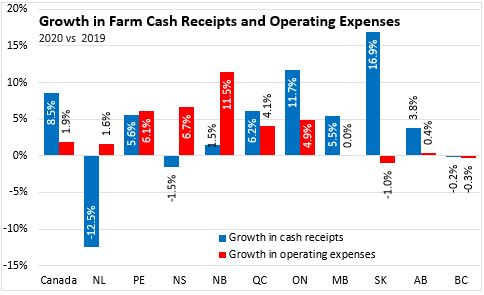
Nova Scotia farm net incomes amounted to -9.0% (loss) of farm cash receipts in 2020, widening from a loss of 2.3% of farm cash receipts in 2019. Newfoundland and Labrador was the only other province to report negative net farm income in 2020.
National average net farm income was 10.9% of farm cash receipts in 2020, up from 8.2% in 2019. The highest net farm income as a share of 2020 farm cash receipts were reported in Saskatchewan (18.4%) and Manitoba (11.3%).
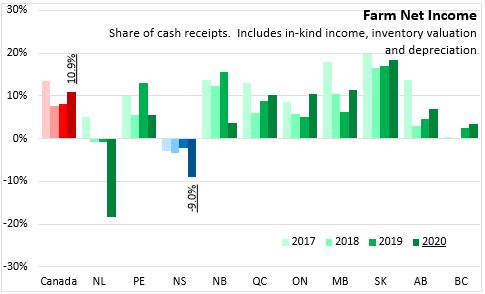
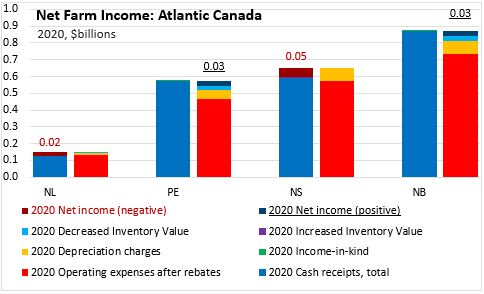
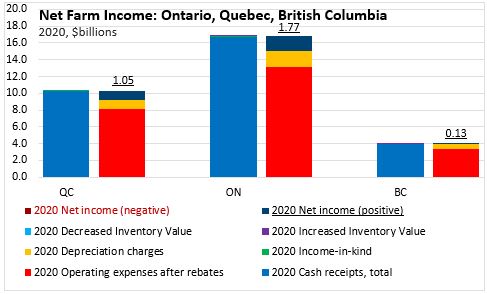
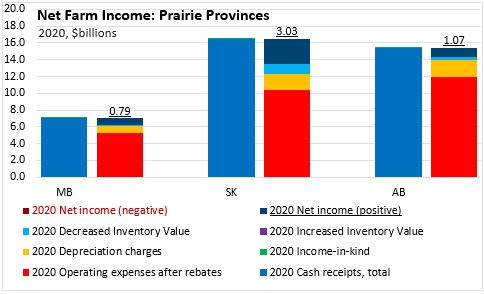
The composition of farm cash receipts is different in Nova Scotia from the national average. Across the country, grains (wheat, oats, barley, rye, flaxseed) make up the largest farm cash receipts, followed by cattle and calves. In Nova Scotia, dairy products, cannabis, fruits and vegetables make up the largest cash receipts (though poultry and hogs are not reported individually for Nova Scotia and may appear in other livestock).
The largest growth in Canadian farm cash receipts in 2020 came from grains, cannabis, lentils/peas/beans and soybeans. There was also an increase in insurance/stability/support payments to farms. Canadian farm cash receipts were down for cattle/calves.
The largest growth in Nova Scotia farm cash receipts were observed in blueberries, floriculture/nursery/sod, cranberries, apples, cattle/calves and unprocessed dairy. Cannabis is one of the largest sources of cash receipts in 2020, though it was previously not reported separately from other crops. Nova Scotia's farm cash receipts were down for insurance/stability/support payments in 2020. Data for cash receipts from furs were not separately reported (for either Nova Scotia or Canada).
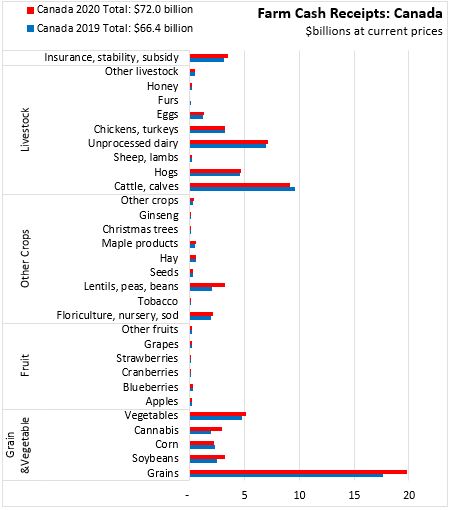

Source: Statistics Canada. Table 32-10-0052-01 Net farm income (x 1,000), Table 32-10-0045-01 Farm cash receipts, annual (x 1,000)
<--- Return to Archive